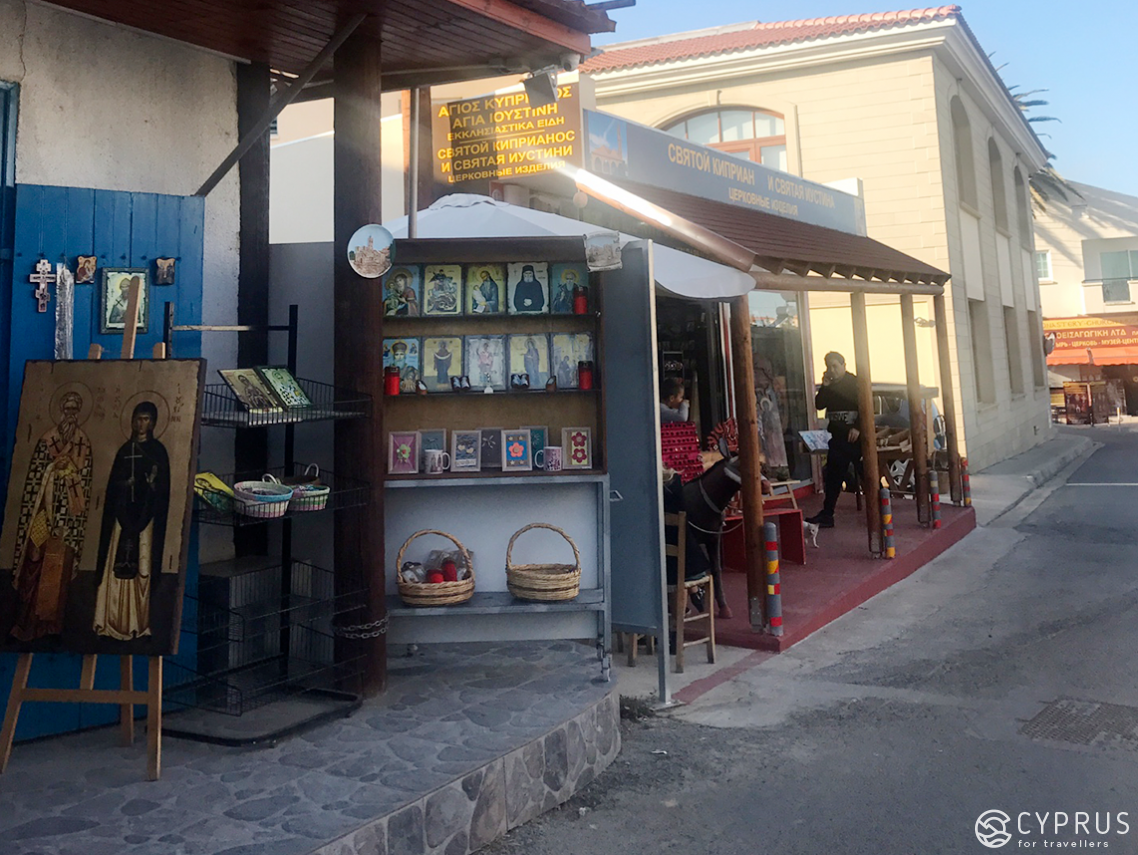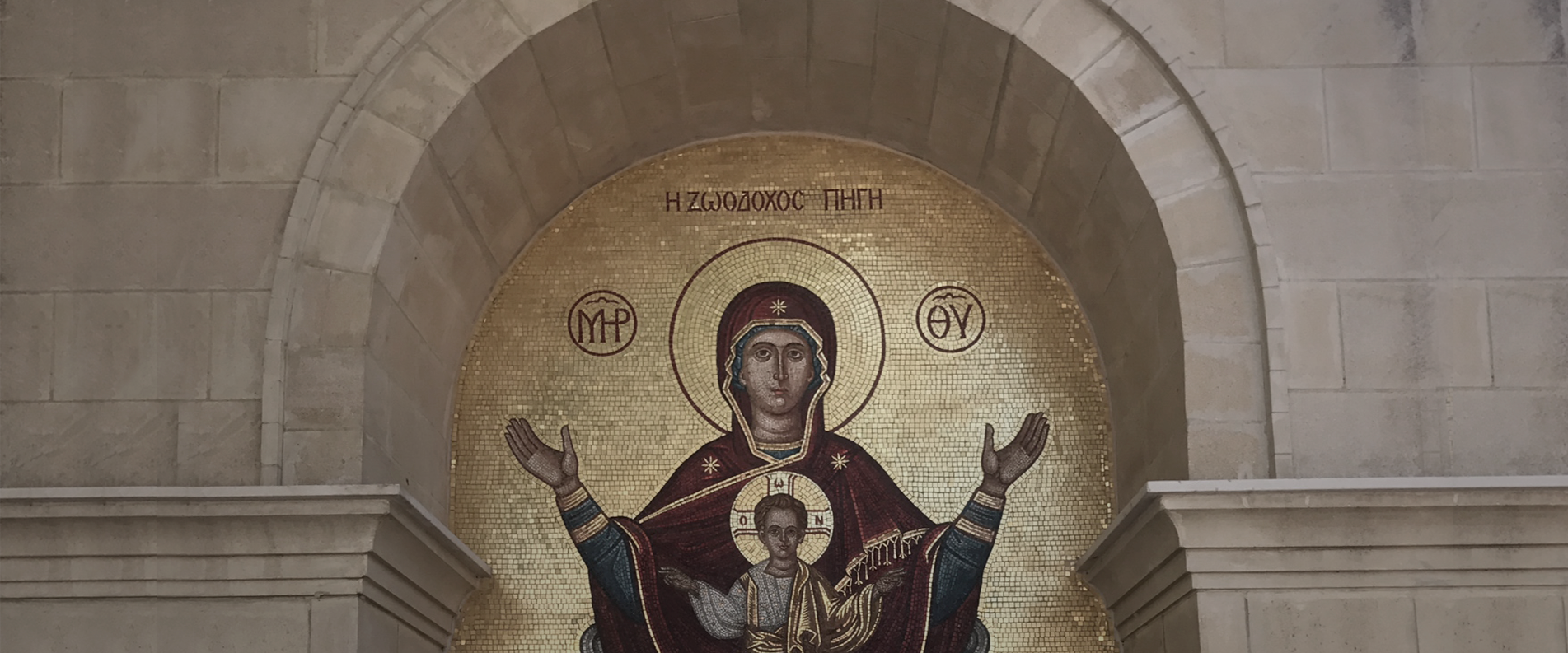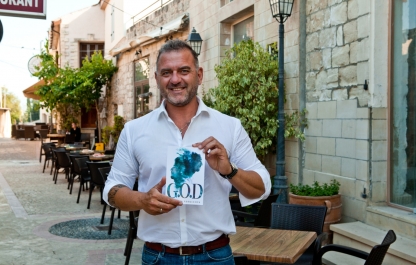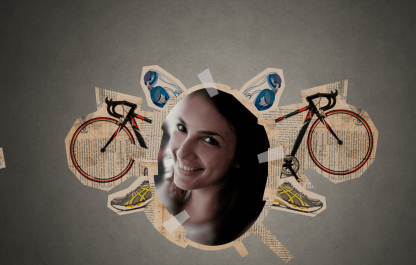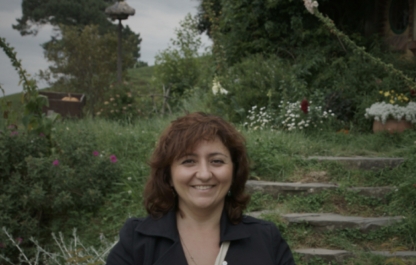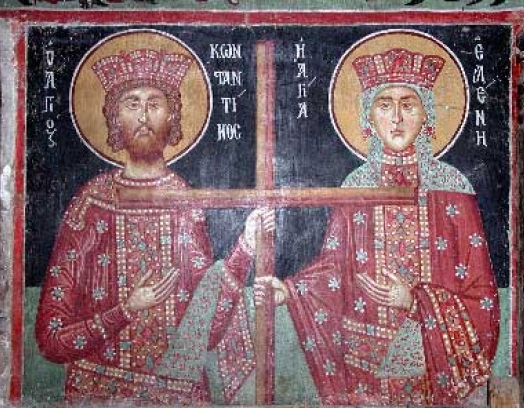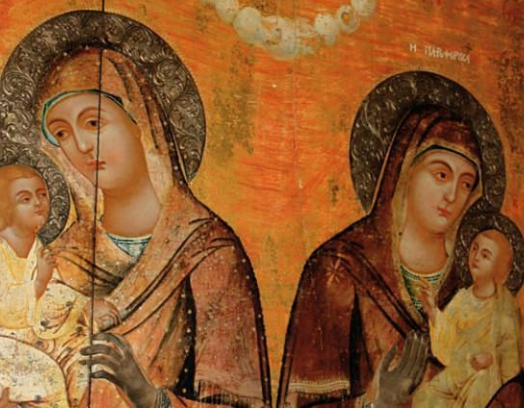I got to know Cyprus on a close, and I’d say, personal level, more than four years ago. After finally moving here, I began to realise that I’d underestimated the number of beautiful, unknown, history-rich places that could fit on the island)))
These were initially bus excursions at the weekend, where after meeting new people, I learnt a lot of new things unknown to me beforehand.
A little later, I was able to go on excursions by myself, having heard about some centuries-old church or a small village known only to the local population. I would set off early in the morning and begin my journey of getting acquainted with these splendid places.
The charm of the local landmarks was spellbinding: each of their personal stories, architecture and the natural beauty surrounding them. When venturing outside the city limits (be it Limassol, Paphos or the capital — Nicosia) and heading for the mountains, you could always find a little church or a functioning monastery. Even without a guide. After strolling around these beautiful spots, I would head onwards. Without fail, a small village or rural settlement would fall into my path. After breathing in the rich aroma of a cup of coffee in the local cafe there, I could listen to a gripping story about local customs or the villagers’ cultural traditions.
The friendliness, hospitality and smiles of the locals here are disarming. Wherever they go, wherever they might end up, each guest will be met with joy and sincere warmth. When going about the island, be confident you’ll always be greeted by the locals with a beaming smile. They will try to talk your ear off, tell you a thing or two and no doubt invite you to their house.
Once while my friends and I were discussing the boundless beauty of the island’s sights, I learnt about a very intriguing spot — the Church of Saint Justina and Cyprian. After hearing the short history of how this church came into being, I realised that my heading for the weekend had undoubtedly been set.
The sun shining on that spring morning was a superb time to discover this place: the church was located on the road from Nicosia to Troodos, in a village named Meniko, around thirty kilometres from the capital, if heading for Troodos. On the banks of the river Akaki.
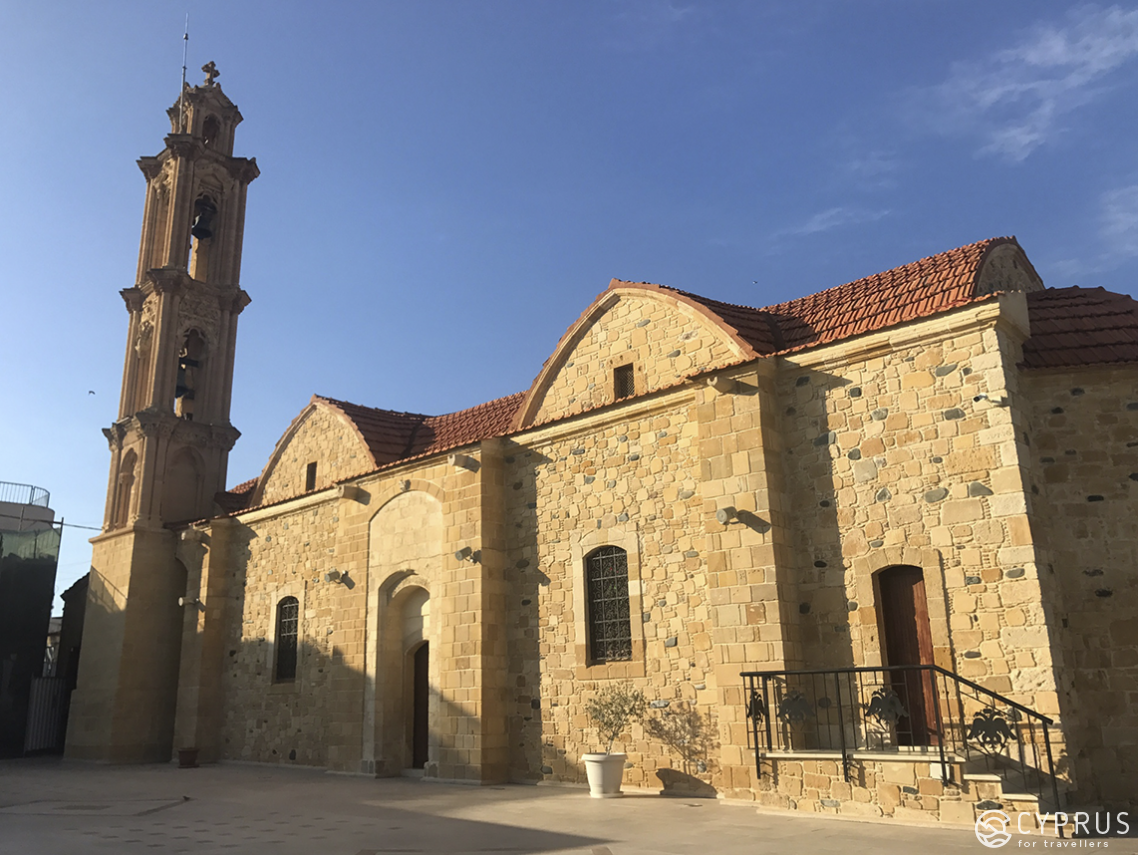
A Little about the Church
The church of Saint Justina and Cyprian features a basilica composed of a northern and southern nave (the main elements of the church’s architecture). In days of old, the north (main) nave was the discovery place of a sacred fount. Here and there, featured on the church walls, frescoes from the 14th century have survived. Long ago, in 1846, the northern nave was extended. In 1913, an elegant, medieval bell tower was erected, in an Italian style. The icons currently adorning the iconostasis are considered to be some of the very first and earliest icons at the monastery, dating back to the 16th century. The remains of the holy martyrs Cyprian and Justina, who have been enclosed in silver-gilded reliquaries, are the main objects of worship in the church. The icons of the saints have been painted on the lid. According to history, the saints’ remains, which were brought to the island from Syria, have lain in the church since the 13th century, healing corruption and warding off the evil eye. The inner section of the church houses a small, internal courtyard. This is where the drinkable water appears from the sacred fount in the centre of the church.
Two small shops lie nearby the church, where you can buy various souvenirs reflecting the building’s history. They also have hand-carved icons on display. Two girls Russian speaking girls called Anna and Alla work in the shop, both of whom have been there for practically 8 years and take pleasure in speaking about the life of the church. They're also happy to chat with visitors and discuss extraordinary things which people bring here again and again.
After getting to know me a little better, with a smile and a somewhat radiant gaze, Alla began to give me an account of the church.
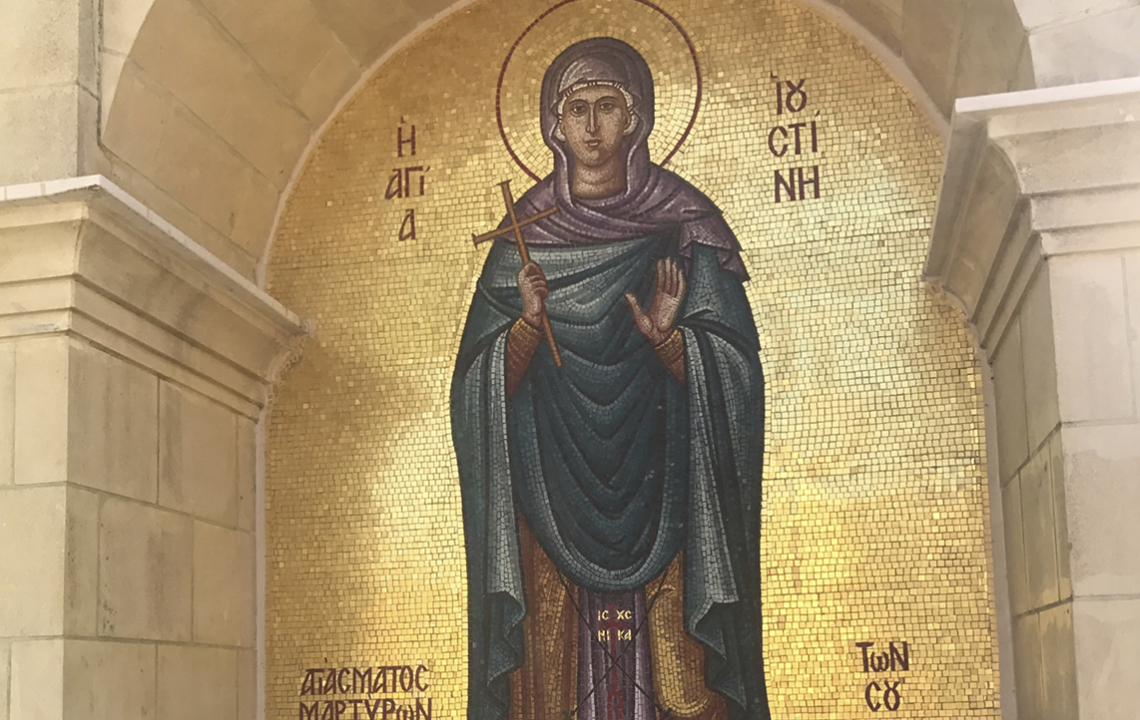
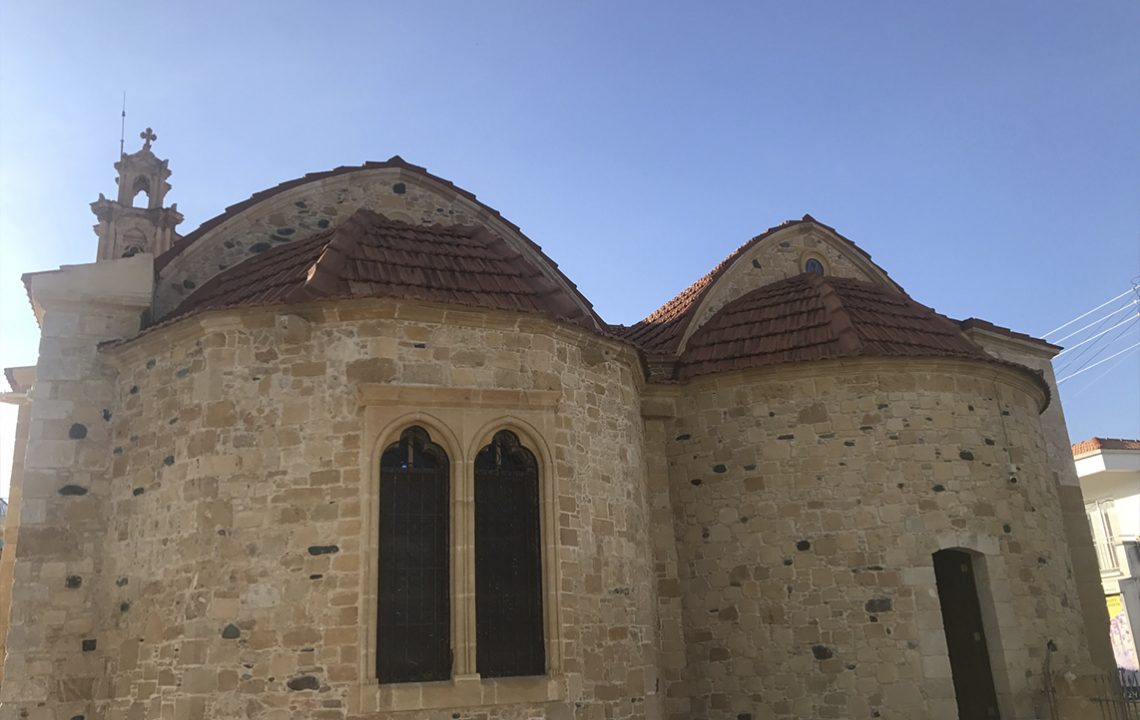

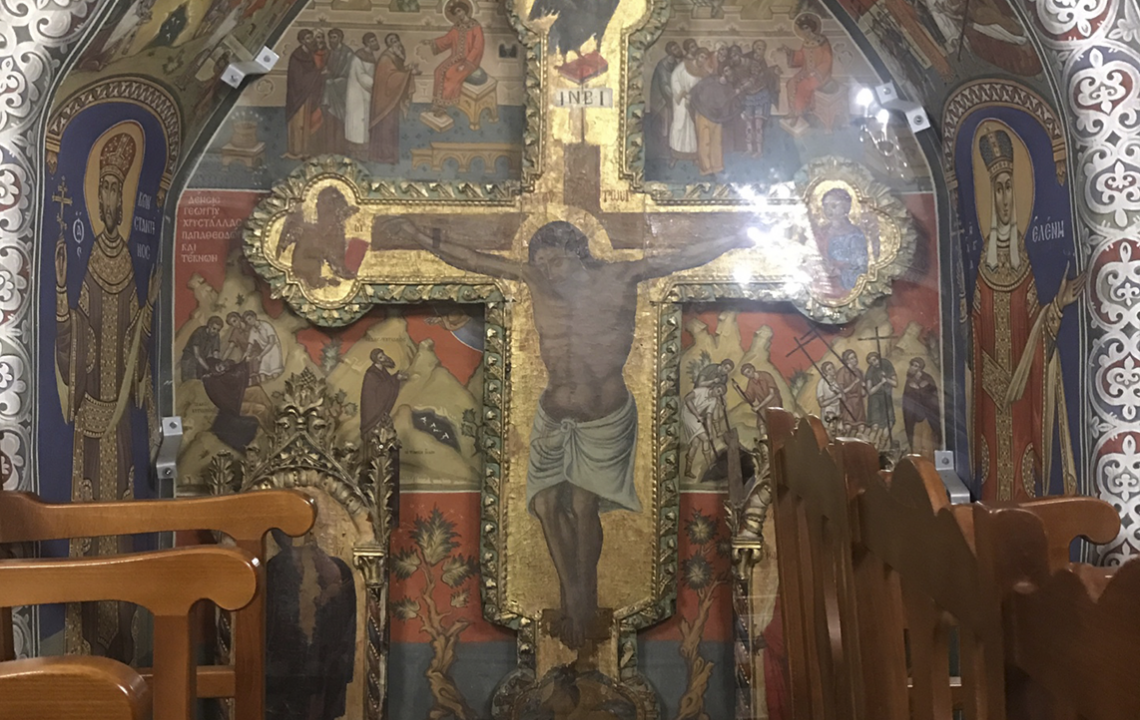
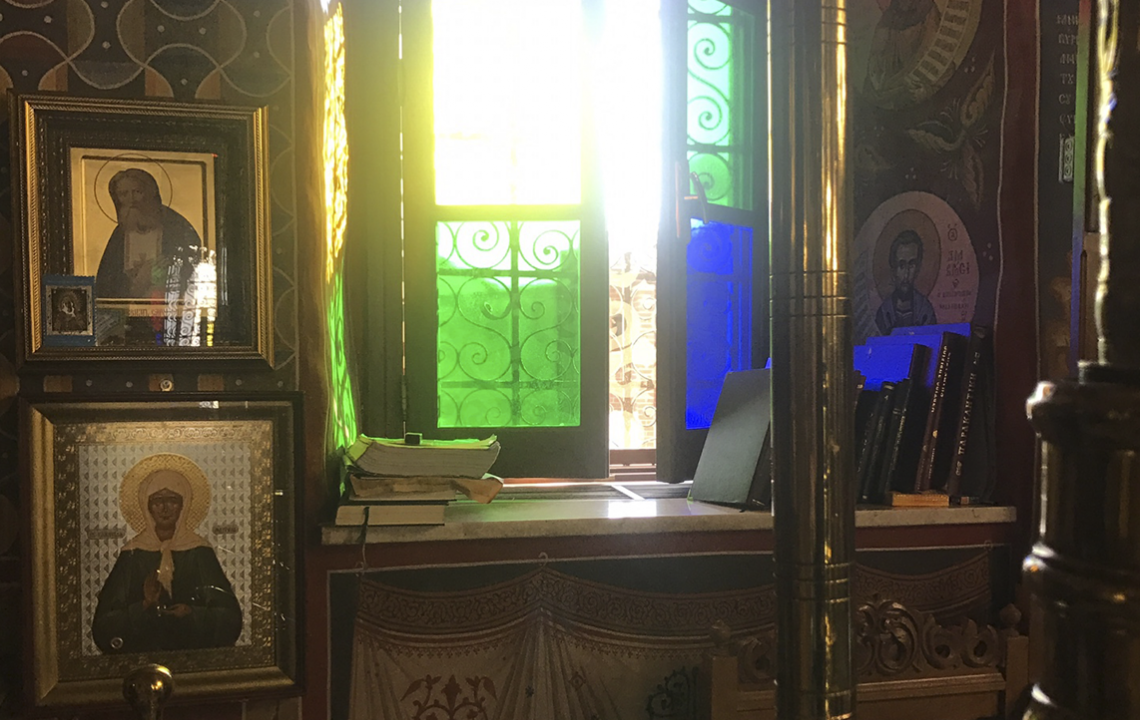
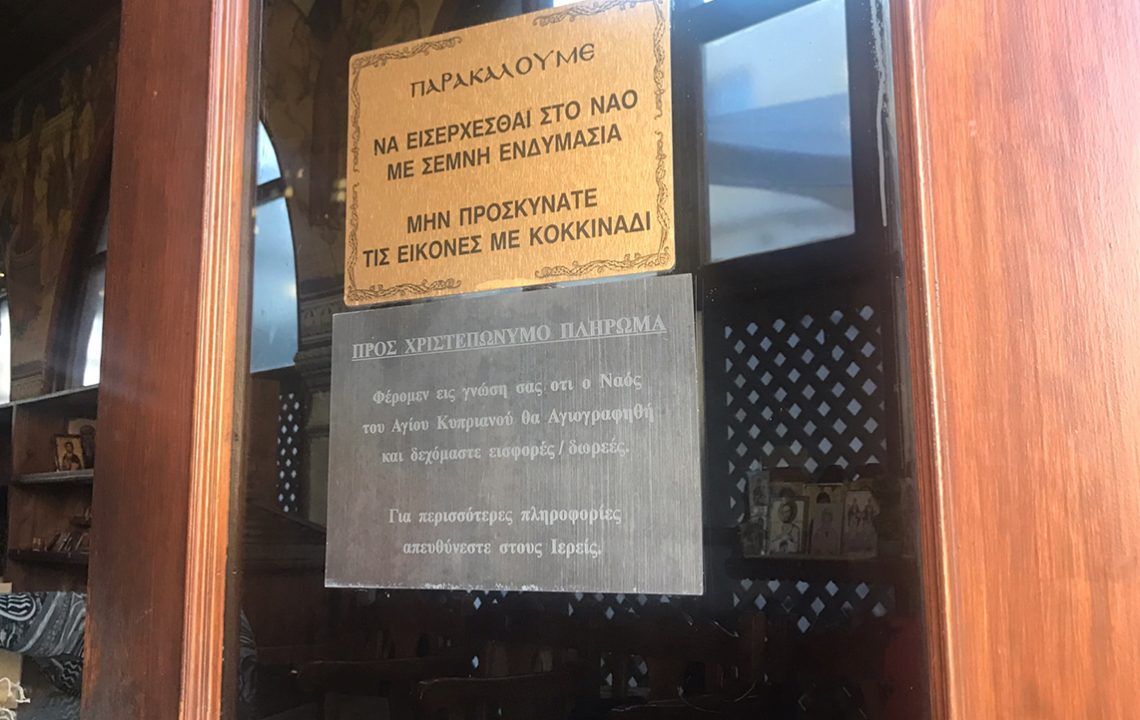
The Story of How the Church Appeared
The church’s origin story proved to be no less stunning or captivating than the building itself.
Cyprian and Justina lived in III A.D., in the bygone city of Antioch of Syria. According to history, Cyprian, after whom the church was named, was born into a pagan family. He spent all his waking life on a spiritual quest and was keen on sorcery. Cyprian hoped to obtain the answer to eternal questions about the universe. In numerous everyday situations, the locals from the city and its vicinity would go to him for aid. To achieve his goal, Cyprian didn’t exclude the possibility of magical rituals, including what was known as black magic.
The girl by the name of Justina was born into a pagan family; her father, a pagan priest. In her youth, she received spiritual educational. And so, one day, after hearing a Christian preacher, she was shocked by his account of Christ and realised she was to become the man’s student. She was prepared to learn this faith. A little time later, the new doctrine of Justina had even impacted her parents, who had also accepted Christianity. The girl’s father Edisii, moreover, became a presbyter of the Antioch Church.
And so, a young man by the name of Aglaias, who had been born into a rich and noble family, once came to Cyprian requesting that he attract the love of that very same girl — Justina. The young Aglaias wished that she reciprocated his feelings and became his wife. Cyprian agreed to help the young fellow. Still, despite all the magic he tried, the meek Justina refused to take Aglaias’s hand. She declared that she was maintaining her devotion to one man only — Jesus. The sorcerer made numerous attempts to cast devilish charms on Christina, but it was all to no avail. Having been convinced that nothing could prevail over the strength of Christ, Cyprian abandoned his wicked spells. He realised the depths of this belief, confessed to his sins, burnt all of his books and accepted the Christian faith. The former sorcerer had renounced his satanic, magic charms. Cyprian lived and prayed, never leaving the church, until his soul had been cleansed of its sins. His life was changed irreversibly after his christening. He gave away all his spiritual powers to serve God. Justina then became his student, who showed promise in all areas. Though their time on earth was short, their spiritual alliance aided many people.
In the years of rule under Emperor Diocletian (303-311), the Christian faith and those who followed it began to be severely persecuted. This was when Cyprian and Justina were caught for preaching Christianity and placed in a dungeon. Cyprian was torn with iron pincers. Justina was beaten until covered in blood, right before his eyes. After all the cruel punishments, the torturers, wishing to take their lives, threw them into a cauldron of scalding water. But the boiling water caused no harm to the holy pair, so the Emperor made the decision to execute them. After praying, Justina and Cyprian accepted death. The Christians took their discarded bodies, which were soon after relocated to Rome, where Saints Justina and Cyprian were buried. Until the 12th century, the bodies of the saints lay in the basilica of Saint Rufina, not far from the port of Claudius. Afterwards, their remains were sent to the Lutheran basilica in Rome. As history testifies, in 1268, when the troops of the Egyptian sultan seized Antioch, the Christian believers were somehow able to transfer the skeletons of Justina and Cyprian to the island of Cyprus. Already here, at the beginning of the 12th, they have remained ever since in the village of Meniko.
For some inexplicable reason, those who came to the saints' burial site were cured of all illnesses and ails. In this period, the church canonised the saintly duo.
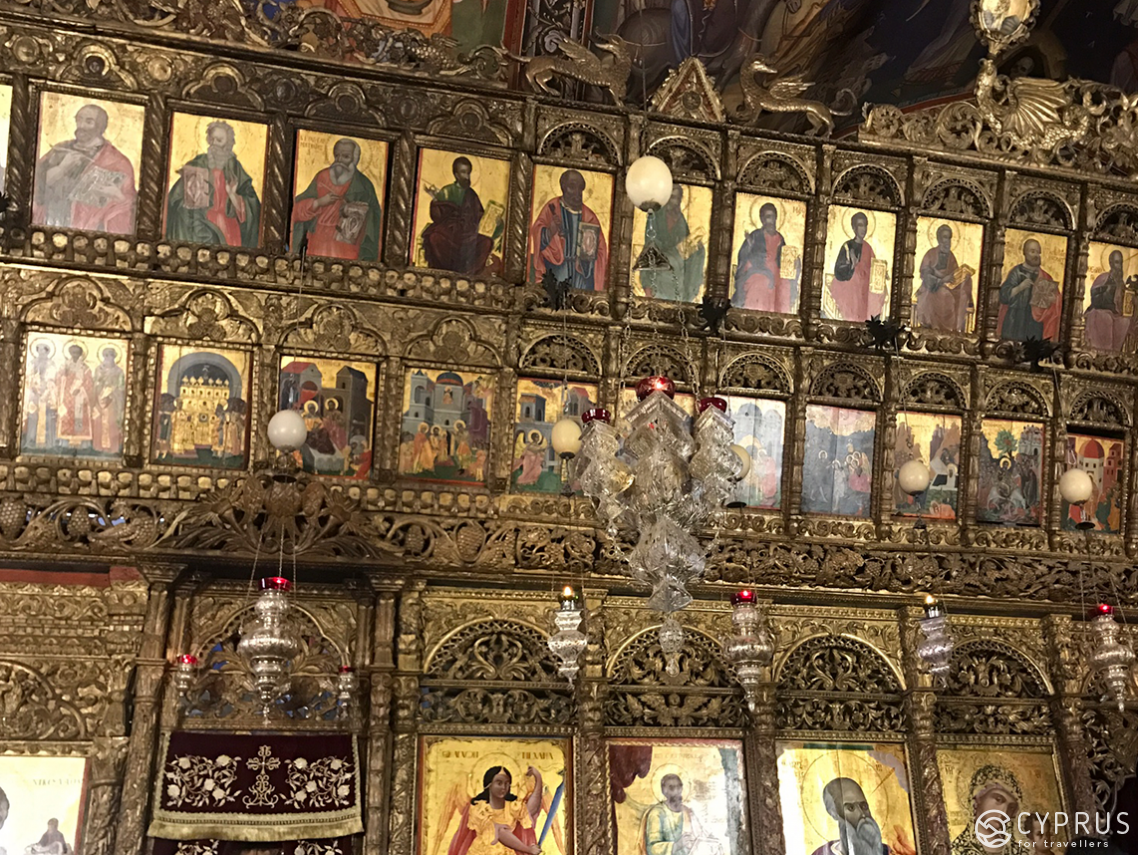
Even later, when the remains were now in Cyprus, King Petros the First, who ruled from 1359-1369, heard about their magical properties and decided to visit the small village. After bowing to the sacred remains, he was cured of the ailments which had been plaguing him. As a sign of gratitude to the holy pair and the power they possessed, he ordered a grand church to be built and a silver sanctum for the miracle-working relics. The king spared no expense on the massive construction of the church: first making the northern and then southern parts. Nowadays, the church serves, in this way, as shelter to pilgrims seeking protection here from the evil eye and maladies. The building has become widely renowned both amongst tourists to the island and religious people across the world.
In that very first moment, as you cross the church threshold, you can see wall writings containing narratives about the several historical periods through which the church has existed. Various artists fashioned them over different periods. My first impression of the building has stuck in my head very vividly: benches and icons carefully laid out as tradition dictates in Cypriot churches; writings on the walls. The aromatic scent of fresh field flowers brought in large bouquets by the local grandmas before service begins.
After venturing further inside, by the foundations of the northern build, your glance falls upon a large iconostasis, in the centre of which lies the icon of Saint Cyprian.
In the corner, to the right of the iconostasis, the icon of Saint Matrena has been placed. As it was explained to me, this was a gift from some tourists. They once came to the island but have since been back repeatedly. One day, they brought this gift with them from Russia. The sacred fount is situated in the church courtyard, which albeit small, is shaded and cool to stand in. You can take a seat here on a hot summer’s day in the fresh air, after visiting the church.
It’s worth noting that in Meniko, like in all Cypriot villages, there are also several other churches aside from the main one, built throughout different historical eras. Amongst such places, there is the small church of “The Mother of all Children”, named in honour of the icon of the Most Holy Virgin Mother. People pray before the icon, asking her to heal weakened and sick children. The miracle icon of the Mother of all children is now kept in the church of Justina and Cyprian. The figures downstairs depict a curious setting: a dream of a sick man in a cave. In Ancient Greece, it became a custom for those who were severely ill to be moved to the church of the god of healing, in the hope of curing them. That same custom was also later adopted in Christianity. At night, the sick would come to this church, famous for its miraculous healings, and remain there until morning. This is the description which you can make out on the icon.
There are two church shops and a small cafeteria near the church of Justina and Cyprian.
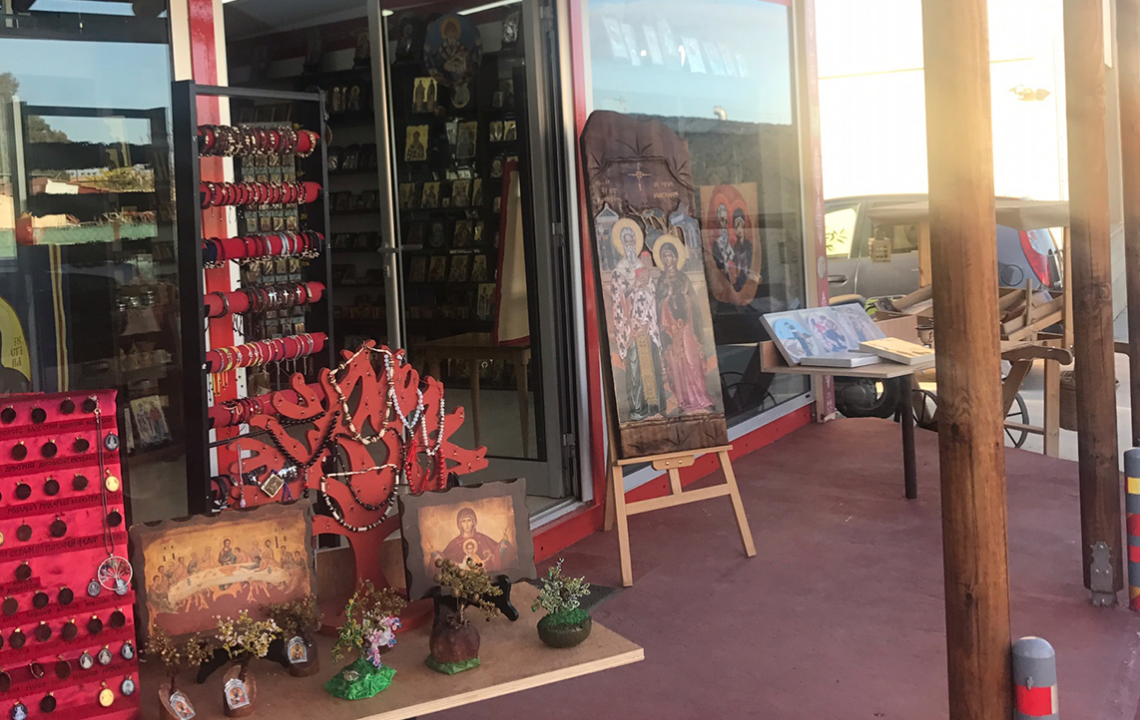
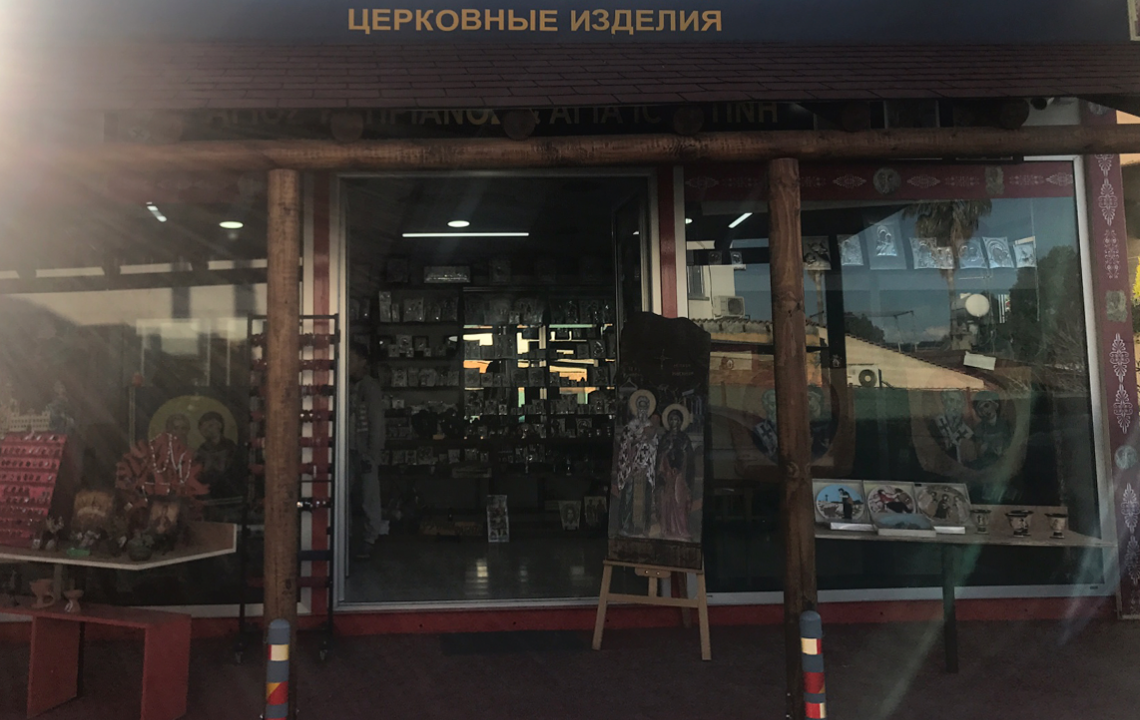
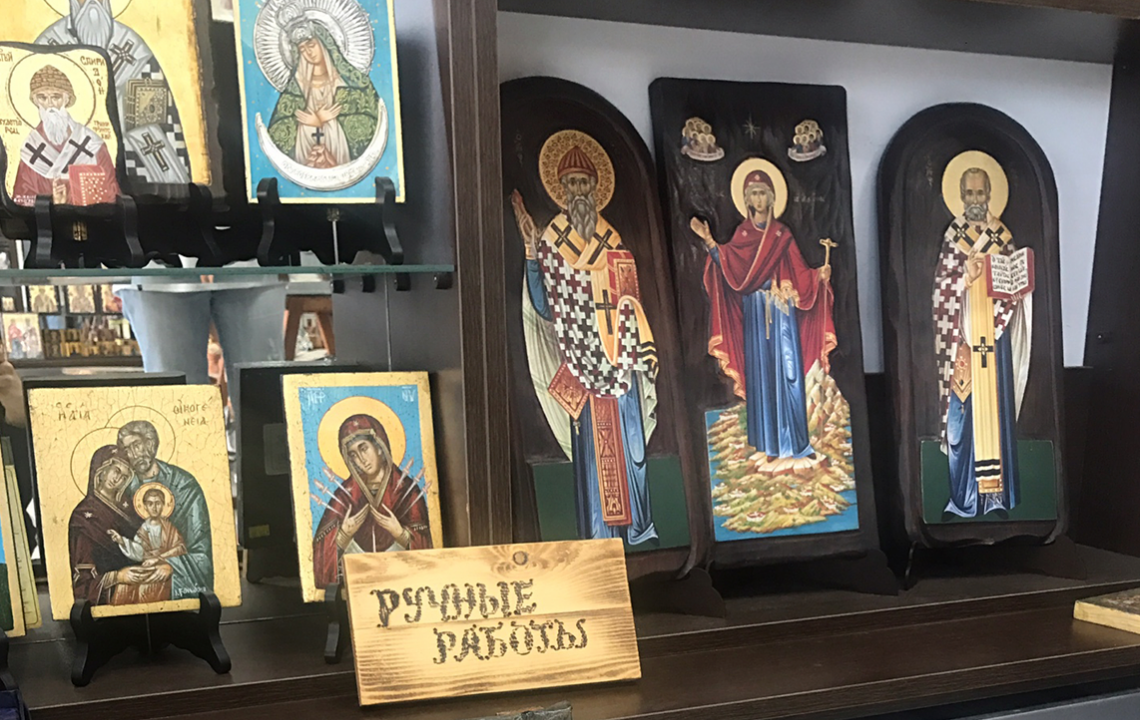
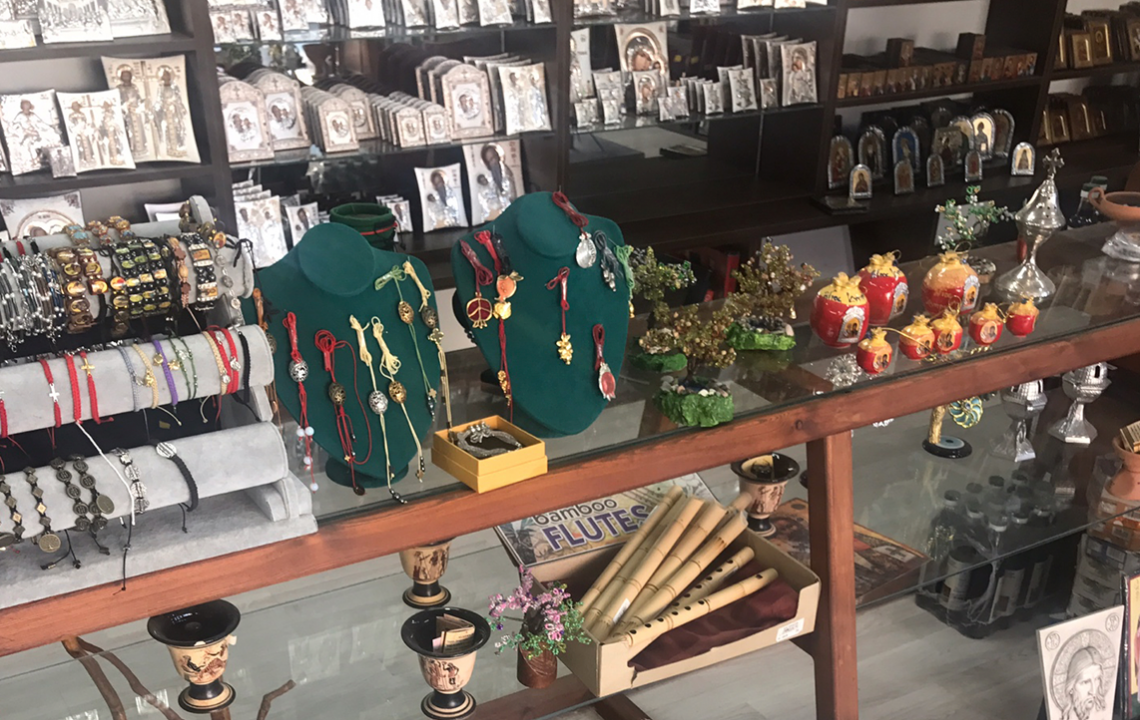
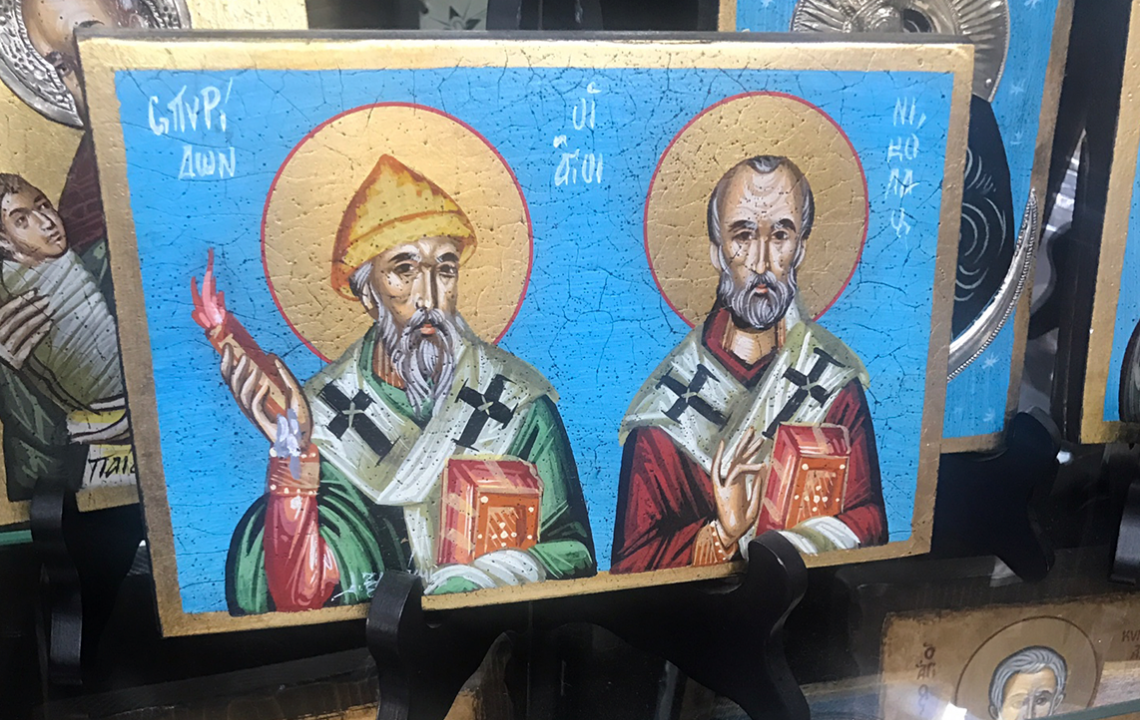
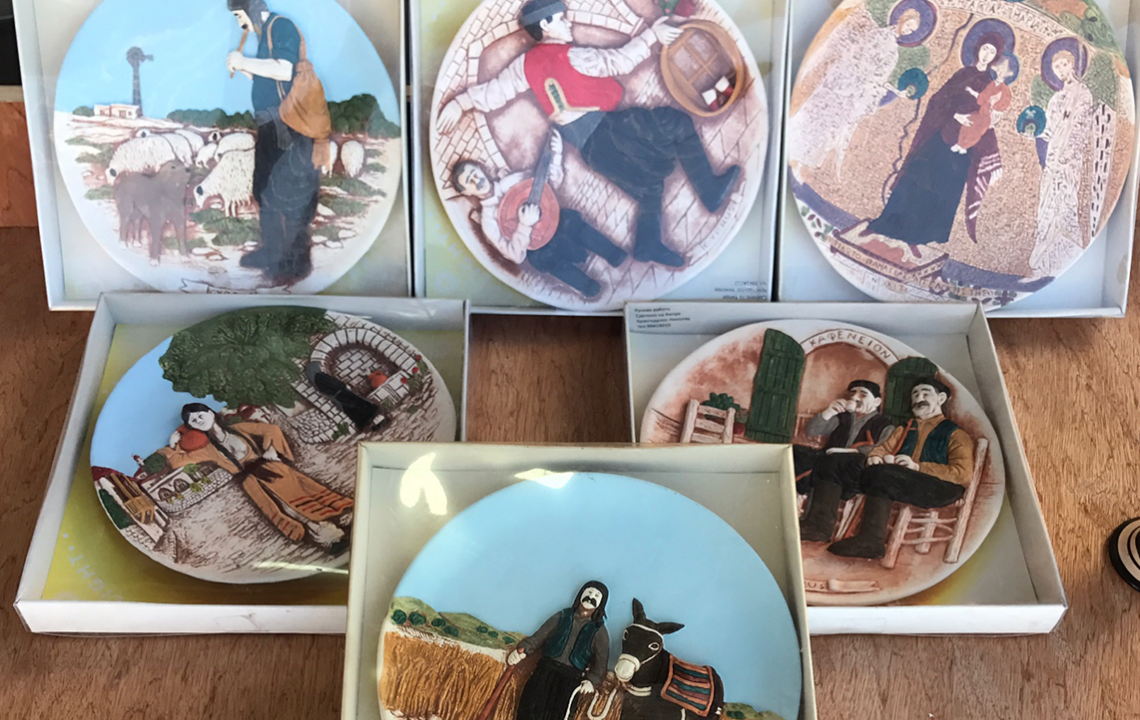
After strolling around the village vicinity and visiting the church, you can grab a quick snack or go for a coffee. Homemade baked goods are on offer, as well as various bread and oil produced in the local Cypriot monasteries.
After getting to know the cafe owners, I also learnt they celebrate the day of Saint Cyprian. Every year, on the 2nd of October, a large number of guests gather in the village. People come from all the island’s towns. The main village street is decorated with flowers. Both sides are set up with stalls featuring souvenirs and hand-crafted icons, which you can buy for home or as a gift for loved ones. The celebrations go on for three whole days. All the clergymen from the different monasteries of the island assemble here, the monks weave bracelets. They bring oil from the Afon mountains, which you can also buy while on a walk. Tourists love to come here on festival days, as well as large families of Cypriots with kids. As the locals say, the celebrations are always bright and beautiful.
I’ll also mention that the church is open to visitors every day.
Services and public prayer are held daily in the church.
Baptisms and weddings are conducted.
From 8:00 til 13:00 — this is known as the sacrament of confession.
Services and communion are held at this time.
From 13:00 - 15:00 — time for lunch and rest.
16:00 - 18:00 — you may bow to the sacred relics.
Until 20:00, visitors may approach the fathers of Savvas or Cyprian to:
- Organise a public prayer or service;
- Confess and receive communion;
- Put themselves before the icon of Saint Cyprian.
As Alla tells us when finishing her narrative, regardless of bad weather or it being the cold winter season, the flow of tourists and pilgrims here doesn’t decrease. People from all over the world come here. Russian tourists love this church, with its authentic beauty and unique history. Bus tours from Limassol have even been organised. After getting to know and visiting the church, you can walk around the surrounding area of the village. A cosy and quiet, serene setting, as well as narrow and peaceful alleyways, make for a pleasant conclusion to such a spiritual visit.
Having thanked Alla for such a gripping tale, as well as her hospitality and heartfelt welcome, I decided to go for a stroll around the village before heading back. In spite of the setting sun, it still had that cosy air of Spring outside. The story of the church of Saints Justina and Cyprian, like the church itself, had left me with feelings of warmth. Having been here, I realised that I’d discovered another element of sacred earth on this extraordinary island.
My first acquaintance long ago with the church of Justina and Cyprian has already developed into a genuine friendship. I love coming here at the weekend in Spring or bringing guests. The church architecture, iconography inside containing accounts of different periods when the church was under formation, as well as friendly chats with the shop workers and the exciting stories they have to share — all of this leaves a very thin ray of pleasant emotions and some air of ease, both when on the drive home and long after your visit.
If you’d like to encounter Cyprus as more than a resort holiday and you’re prepared to get familiar with historical sites. To learn about the island in-depth and see charming alleyways — then without a doubt, I recommend you visit Meniko village and take a walk to the monastery of Justina and Cyprian. While walking throughout the sacred lands of the island, you will remain content with what you’ve seen and most likely want to come back again. Or to see something new and forever out of the ordinary.
All it takes is that one step of changing your route, going away from the rhythm of a customary holiday, driving further from the noisy centres of the city or your hotel and an unforgettable atmosphere will be revealed to you. One gifted to holidaymakers by the air of orthodox Cyprus and the holy land of the island.
Finding the monastery is easy: it should be enough to plan a route to Meniko village on 2Gis or GoogleMaps.
For those still intending to visit these spots, you can call the telephone numbers of the church shop: +357 99-68-44-74 or +357 97-79-00-90.
Alla and Anna will gladly give you a detailed explanation of the route to take and will meet you upon entry into the monastery.
Discover new spaces, breathe in deeply and soak up the splendour of what you’ve witnessed )))
After all, this always perks us up and gifts us with new strengths, sensations and colours of the world.
